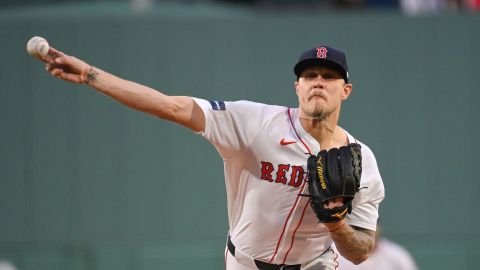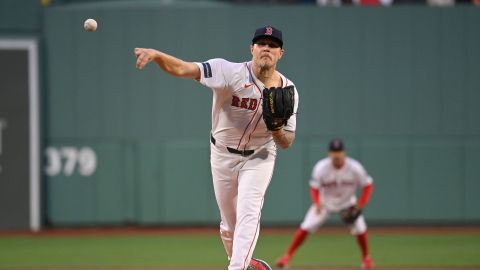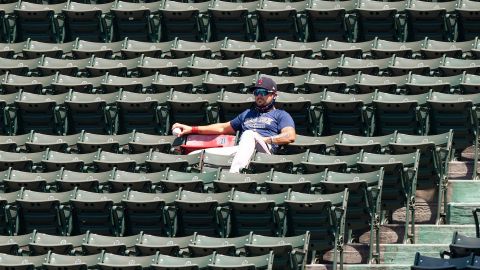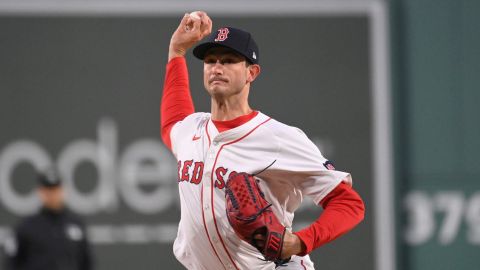With spring training just around the corner and most major free agents off the market, early February is as good a time as any to examine the next wave of talent that will infiltrate Major League Baseball in 2012 and beyond. Farm systems are the lifeblood of major league organizations, and in an age where free agent contracts continue to grow, the ability to draft and groom homegrown talent is as important as ever.
There’s a certain amount of subjectivity that comes with any prospect ranking, as balancing proximity to the majors, upside and probability is a difficult task. But based on scouting reports from Baseball America, ESPN’s Keith Law, Minor League Ball’s John Sickles and more, plus discussions with those in the industry and analysis of both traditional and advanced statistics, here is a ranking of the Top 100 prospects in baseball.
The bottom twenty players on the list represent a combination of high-upside arms who are several years away from the majors, intriguing five-tool outfielders and some players who are close to the majors, but don’t profile as stars.
Players need to meet MLB rookie requirements (less than 130 at-bats or 50 innings pitched) to be eligible. Players must also currently be signed with an organization to be eligible, excluding would-be Top 100 candidates such as Yoenis Cespedes and Jorge Soler.
The series will air in five parts, with the Top 20 being released on Monday, February 13.
100. Jeurys Familia, starting pitcher, New York Mets
Familia’s numbers indicate that he should rank much higher on this list, as the 22-year-old righty stuck out over a better per inning in Double-A last season while supporting a 3.96 Fielding Independent Pitching (FIP) mark. Familia’s ground ball and walk rates were less than stellar, which is part of the reason he finds himself just barely making this list. The biggest cause for concern, though, is his delivery, which looks to make him an injury waiting to happen. If he can stay healthy he’s a number three starter or shutdown reliever, but that’s a gigantic if.
99. Ryan Lavarnway, catcher/designated hitter, Boston Red Sox
Lavarnway is regularly compared to Mike Napoli, and while it’s clear he’s never going to be a good defensive catcher his bat doesn’t get enough credit. In over 600 at-bats between Double-A, Triple-A and the majors, Lavarnway hit 34 homers and 25 doubles, and posted consistently high on-base percentages until reaching the big leagues as well. He fits into a major league lineup right now, and will be an asset in any lineup if he can become anything better than a liability behind the plate.
98. Mikie Mahtook, outfielder, Tampa Bay Rays
A moderate five-tool outfielder in the Shane Victorino mold, Mathook was a steal for the Rays, who nabbed him with the 31st pick in the 2012 draft. None of Mahtook’s tools are plus but none are worse than average either, and his up-tempo style of play allowed him to be a force at LSU last season. Mahtook should begin 2012 in Single-A, but could be ready to compete for a spot in the majors by 2014. He has a moderate ceiling but a high floor.
97. Jessie Biddle, starting pitcher, Philadelphia Phillies
Biddle has some of the best pure stuff of any lefty in the minors, and took big steps forward in 2011 in terms of improving his command. The Phillies’ first round pick in 2010, Biddle posted an 8.39 K/9 and 3.38 FIP in 133 innings at Single-A last season. His 4.47 BB/9 was a major improvement from 2011, but he still clearly needs to work on his command. He’ll pitch all of 2012 at age 20 and is several years away, but he has ace potential.
96. Chad Bettis, starting pitcher, Colorado Rockies
A second round pick in 2010, Bettis dominated in his first full professional season in 2012, posting a 9.76 K/9 rate and 2.73 FIP while issuing an acceptable 45 walks in 169.2 innings. Bettis was 22 and in High-A, so a good performance is to be expected, and he delivered. Bettis profiles as a mid-rotation starter thanks to his lack of a dependable third pitch, and may wind up in the bullpen, where he spent most of his time in college.
95. Cheslor Cuthbert, third baseman, Kansas City Royals
Cuthbert held his own as an 18-year-old in Single-A last season, hitting .267 with a .345 OBP, eight homers and 13 doubles. Those numbers aren’t terrible impressive, but consider that Cuthbert could repeat the level in 2012 and still be young for the league. Cuthbert profiles as a prototypical power-hitting third baseman who scouts hope can grow into 25-homer pop and learn to be more patient. Cuthbert clearly tired at the end of last season and needs to adjust to the rigors of playing 130-plus games per year.
94. Tyrell Jenkins, starting pitcher, St. Louis Cardinals
An athletic pitcher who the Cardinals signed away from a football scholarship at Baylor in 2010, Jenkins has a solid first professional season, striking out 55 in 56 innings with a 59% groundball rate in rookie ball. It’s all about projection with Jenkins, and his mid-90s fastball, repeatable delivery and developing secondary pitches give him top of the rotation potential. He ranks this low only because he’s unlikely to see the majors for at least three more seasons
93. Mason Williams, outfielder, New York Yankees
Williams had a phenomenal first professional season in 2011, showing four tools and impressing with a .395 OBP in Low-A. Williams snagged 28 bases as well, and projects as a plus defender in center field. Scouts think he’ll grow into some power, but it wasn’t a part of his game last season, as he hit just three homers and 11 doubles. Williams should start the year in full season ball as a 20-year-old and needs to work on his breaking ball recognition.
92. Jedd Gyorko, third baseman, San Diego Padres
Gyorko had a great statistical season in 2011, but he was a little old for High-A, didn’t hit for much power in Double-A and benefited greatly from an absurdly high BABIP. It’s tough not to believe in Gyorko’s hit tool, but pretty easy to be skeptical about his glove and power. Gyorko doesn’t have the ideal baseball body and likely won’t spend all of his career at third base, but he can handle the position for now. He could develop into a David Freese-like player.
91. Robbie Grossman, outfielder, Pittsburgh Pirates
After a fairly uninspiring first two professional seasons, Grossman broke out in 2011, reaching base at a .418 clip with 49 extra base hits (XBH) and 24 steals in 616 plate appearances at High-A. Grossman was repeating the level, but was only 21 for the entire season and the Florida State League is a tough place for hitters. Grossman needs to add a touch more power and improve his steal rate, but the potential is there for him to become a Nick Markakis-like right fielder who should be ready by mid-2013.
90. Allen Webster, starting pitcher, Los Angeles Dodgers
A prototypical right-hander, Webster had an up-and-down 2011 season, inducing a high number of groundballs and posting an acceptable walk rate but giving up a ton of hits while seeing his strikeout rate fall upon reaching Double-A. His advanced statistics suggest he was partially the victim of some bad luck, and he’ll still be young for his level even if he repeats Double-A all season. His ceiling is as a mid-rotation workhorse who will keep the ball on the ground.
89. Joe Wieland, starting pitcher, San Diego Padres
One of the “safest” pitching prospects in the minors, Wieland looks to be a very strong bet to become a No. 3 or 4 starter within the year. He has limited upside, though, thanks to pedestrian stuff and the lack of a true out-pitch. Wieland has outstanding control and a durable build, but posted average strikeout and groundball ratios once he reached Double-A. Wieland’s strengths play well to his future home ballpark of Petco, and he may be able to pitch above what his talent would normally allow.
88. Matt Barnes, starting pitcher, Boston Red Sox
Barnes didn’t get quite as much national press as fellow collegiate arms such as Gerrit Cole, Trevor Baur or Sonny Gray, but was a steal for the Red Sox as the nineteenth pick in the draft. Barnes has a solid combination of upside and probability, and has a frame that suggests he’ll be a rotation workhorse in the future. He doesn’t have the same type of fastball, but he’s not an entirely dissimilar player than the Mets’ Matt Harvey – now a Top 50 prospect — was when he was drafted in 2010.
87. Noah Syndergaard, starting pitcher, Toronto Blue Jays
A first round pick by the Jays in 2010, Syndergaard was very impressive in a small sample size in 2011, posting a 10.4 K/9 rate and 2.7 BB/9 rate in 59 innings between rookie ball, Low-A and Single-A. Probability prevents Syndergaard from ranking higher, as he’s just 19 and has under 100 professional innings to his name, but his size and stuff give him number one starter potential. It’s not hard to envision him as a Top 30 prospect at this time next year.
86. George Springer, outfielder, Houston Astros
In terms of pure talent, Springer was arguably the second best college hitter in the 2011 draft, trailing only Anthony Rendon. With good hand-eye coordination, above average power and enough speed to man centerfield, Springer may be special if he puts it all together. He’s this low because of serious concerns about his mechanics, though, and he’s not as polished as many prospects his age are. With good coaching, he could through the system fast.
85. Justin Nicolino, starting pitcher, Toronto Blue Jays
This is an aggressive ranking for Nicolino given the incredibly small sample size with which there is to work, but the 2010 second round pick was lights out in his pro debut in 2011. Nicolino posted a 10.8% K/9 rate and a 1.9% BB/9 rate through 61 innings between Low and Single-A, and put up good groundball rates as well. That’s quite impressive for a 20-year-old lefty, and Nicolino will be an elite prospect should be perform well in Single-A in 2012.
84. John Lamb, starting pitcher, Kansas City Royals
Lamb looked poised to cement himself as one of the game’s premier prospects in 2011, but instead threw just 35 innings before undergoing Tommy John surgery in June. A 21-year-old lefthander with a low-90s fastball, plus changeup and solid curveball, Lamb still has enough potential to make the bottom of this list. He obviously comes with plenty of risk and can’t be considered a high-probability prospect, but if he rebounds all the way he profiles similarly to Cole Hamels. He should pitch again in the second half of 2012.
83. Jose Campos, starting pitcher, New York Yankees
An underrated component to the Jesus Montero–Michael Pineda trade, Campos pitched extraordinarily well in Low-A last season, posting 85 strikeouts and just 13 walks in 81.1 innings. Campos is still mostly a fastball pitcher at this point, and will need to develop his secondary pitches significantly. That being said, he already has impressive control and a durable build, and won’t turn 20 until July. Campos will move up to Single-A and try to increase his workload in 2012.
82. Derek Norris, catcher, Oakland Athletics
Norris is one of the most polarizing prospects in the minors. One glance at his .210 average or 27.7% strikeout rate from a year ago, and it’s tempting to write him off. However, he walked in an outstanding 18.2% of his plate appearances, hit for power with 20 homeruns and was the victim of a low .251 BABIP. He’s unlikely to be a potential star, but catchers who can reach base at a .370 clip and hit for power are rare.
81. Leonys Martin, outfielder, Texas Rangers
The recipient of a five-year, $15.5 million deal from the Rangers last May, Martin is a 23-year-old Cuban center fielder with above average speed and glove tools who has some potential with the bat as well. Martin lacks much power to this point in his career but some scouts believe he could grow into more as he matures. There are questions about Martin’s hit tool and patience, but his 11.1% K/BB rate in Double-A was encouraging. He should be in the majors for good by July.
Prospects 1-20 I 21-40 I 41-60 I 61-80 I 81-100



